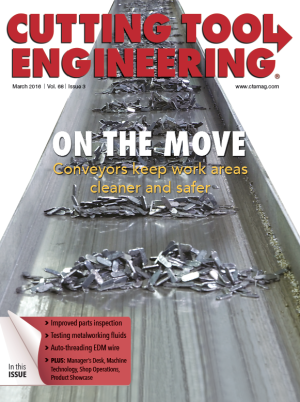Do you know why your last part run had a high defect rate, why parts from an outside supplier were nonconforming, and what you are going to do with those parts?
If your company has a material review board, it can probably answer those questions.
A material review board is a group of individuals with the authority to disposition nonconforming parts and materials. I’m on the MRB where I work, and an individual from each of the following disciplines is usually represented: quality, design engineering, manufacturing engineering, purchasing and machining.
We meet on a daily basis in the quality area. Nonconforming parts are staged there for our meeting, which is usually scheduled within the first hour of the work day. This way, we can start working on solutions and contain any damage right away. When we meet, we review the preceding day’s nonconforming material report (NCMR). This document provides details about the nonconforming parts, including what is wrong, the responsible department, who wrote the document and the number of nonconforming parts. If the NCMR is on a purchased part, the vendor is also listed.
When we evaluate parts, some are considered outright scrap because of out-of-tolerance features; for other parts, the raw stock might be nonconforming. These are just a couple of reasons. We then ask whether the parts can be reworked, how the parts became nonconforming (i.e., if an operator or machine caused the problem), and, if outsourced, should the parts be returned to the vendor for rework or replacement. With this type of information, we decide how to disposition the parts.
We want the process to be relatively quick, with the goal being to disposition the parts during the meeting. For example, if the parts are scrap, they should be disposed of before the end of the day.
If parts need to be returned to a vendor, they should be sent back no later than the next day. Get the parts off the floor and move on. Chances are, if a manufacturer has any sort of volume, nonconforming parts are a daily occurrence.
It is important to track the nonconforming issues, so, over time, you generate a historical document of the issues. Perhaps the problem is with a new vendor, an operator who needs more training or a process that is not robust.
All companies—regardless of size—should have a material review board. A company employing 10 individuals may only need a one-person MRB, such as the owner or senior shop employee. A company with 30 employees might go with a two-member MRB, such as a manager and QA person. The companies I’ve worked for recently employ 150 to 200 associates, so their MRBs are larger. Larger companies may even have more than one MRB to handle different company segments or divisions.
If a company wants to improve its overall process and reduce NCMRs, it must have a material review board to track the issues it faces.


